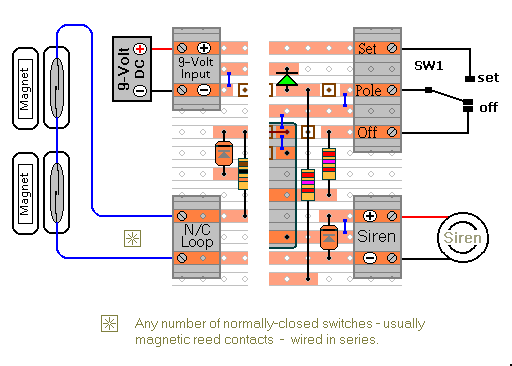The components used in the circuit should be widely available. However, none of them are critical. So - if you can't find the specified parts -
You're certain to find something that will do just as well. And - if you prefer to make your own PCB -
The Stripboard Layout Is Easily Converted.
Stripboard or Veroboard is a board drilled with a matrix of 1mm holes spaced approximately 2.5 mm apart and joined in rows by copper strips. The piece used for the prototype has 15 rows with 26 holes in each - and measures about 7 cm by 4 cm (2.6" by 1.5"). The drawing shows the board with PCB mounting terminal blocks. But to save money - and/or space - the wires may be soldered to veropins - or directly to the board itself.
Parts List
Click Here For A Photograph Of The Prototype.
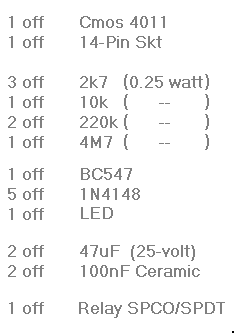
Construction Notes
Click here if you're new to constructing stripboard projects.
The terminals are a good set of reference points. To fit them, you may need to enlarge the holes slightly. Then turn the board over and use a felt-tip pen to mark the 20 places where the tracks are to be cut. Before you cut the tracks, use the "actual size" drawing to
Check The Pattern is correctly marked .
Actual Size
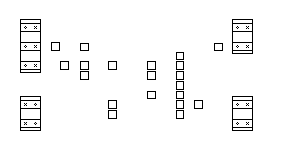
When you're satisfied that the pattern is right - cut the tracks. Make sure that the copper is cut all the way through. Sometimes a small strand of copper remains at the side of the cut and this will cause malfunction. Use a magnifying glass - and backlight the board. It only takes the smallest strand of copper to cause a problem. If you don't have the proper track-cutting tool - a 6 to 8mm drill-bit will do. Just use the drill-bit as a hand tool - there's no need for a drilling machine.
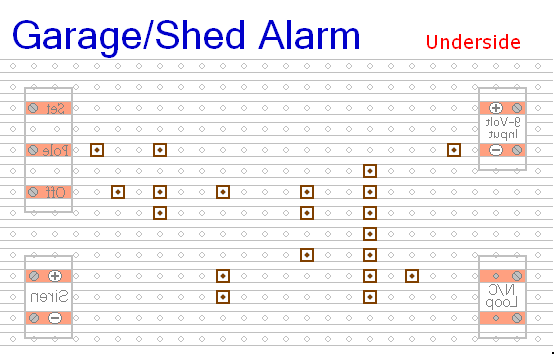
Next fit the 7 resistors and the
Six Wire Links. For the links - I used bare copper wire on the component side of the board. Telephone cable is suitable - the single stranded variety used indoors to wire telephone sockets. Stretching the core slightly will straighten it - and allow the insulation to slip off.
The resistors are all shown lying flat on the board. However, those connected between close or adjacent tracks are mounted standing upright.
See The Photo Of The Prototype.
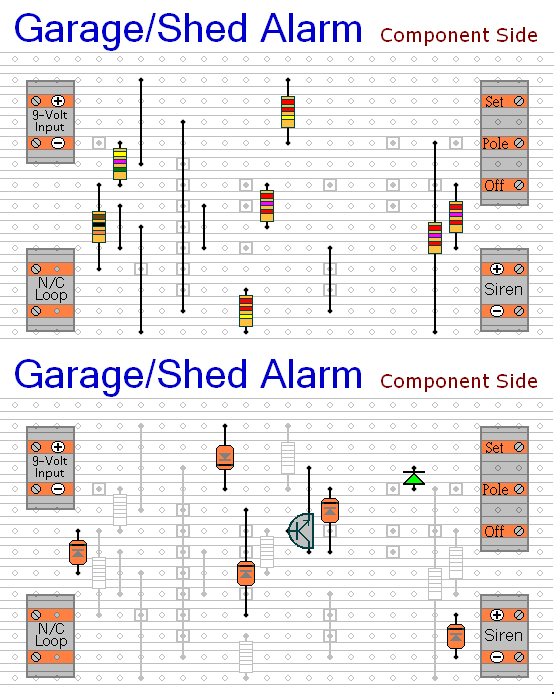
The next stage is to fit the diodes and the transistor. Pay particular attention to the orientation of the diodes. Note that D2 faces downwards. Again - they are all drawn lying flat on the board. But those connected between close or adjacent tracks are mounted standing upright.
See The Photo
You'll want to mount the LED where it can be seen - perhaps on the front of your alarm-panel. It should be connected to the circuit board using two light flexible wires - e.g. the cores from a piece of alarm cable. The wires may be attached to the circuit board from the front or the rear. Make them long to begin with. You can shorten them later when you assemble your alarm-panel. Twist the wires together to keep them tidy.
Fit the remaining six components (capacitors, relay and IC socket). Pay particular attention to the orientation of the electrolytic capacitors. They generally have a stripe down the side next to the
Negative terminal. Note that C2 & C4 face in opposite directions.
See The Photo Of The Prototype. .
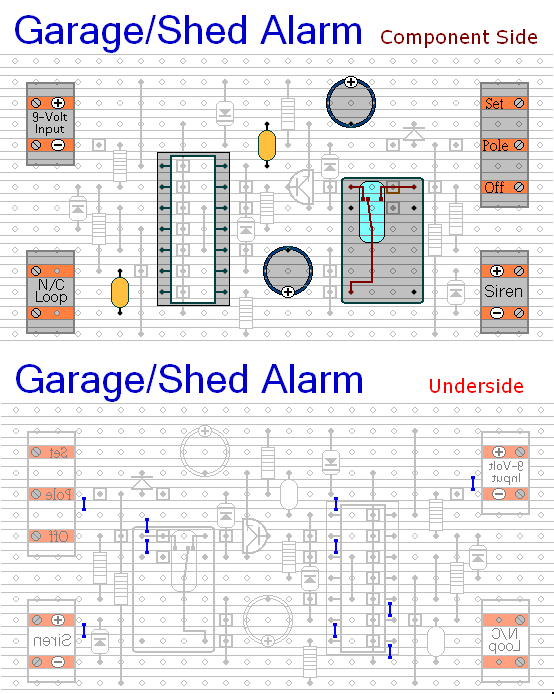
Turn the board over and examine the underside carefully - to make sure that there are no unwanted solder bridges or other connections between the tracks. If you backlight the board during the examination - it makes potential problem areas easier to spot. When you're satisfied that everything is in order - add the 10 solder bridges to the underside of the board. The bridges are just small blobs of solder - used to connect adjacent tracks.
Finish off by inserting the Cmos 4011 into the socket. Using a socket reduces the chances of damaging the IC - and makes it easier to replace if necessary. Pin 1 of the IC should be in the top left-hand corner. Check that all 14 pins have entered the socket. Sometimes - instead of entering the socket - a pin will curl up under the IC.
You Are Now Ready To Test Your Alarm
External Connections
